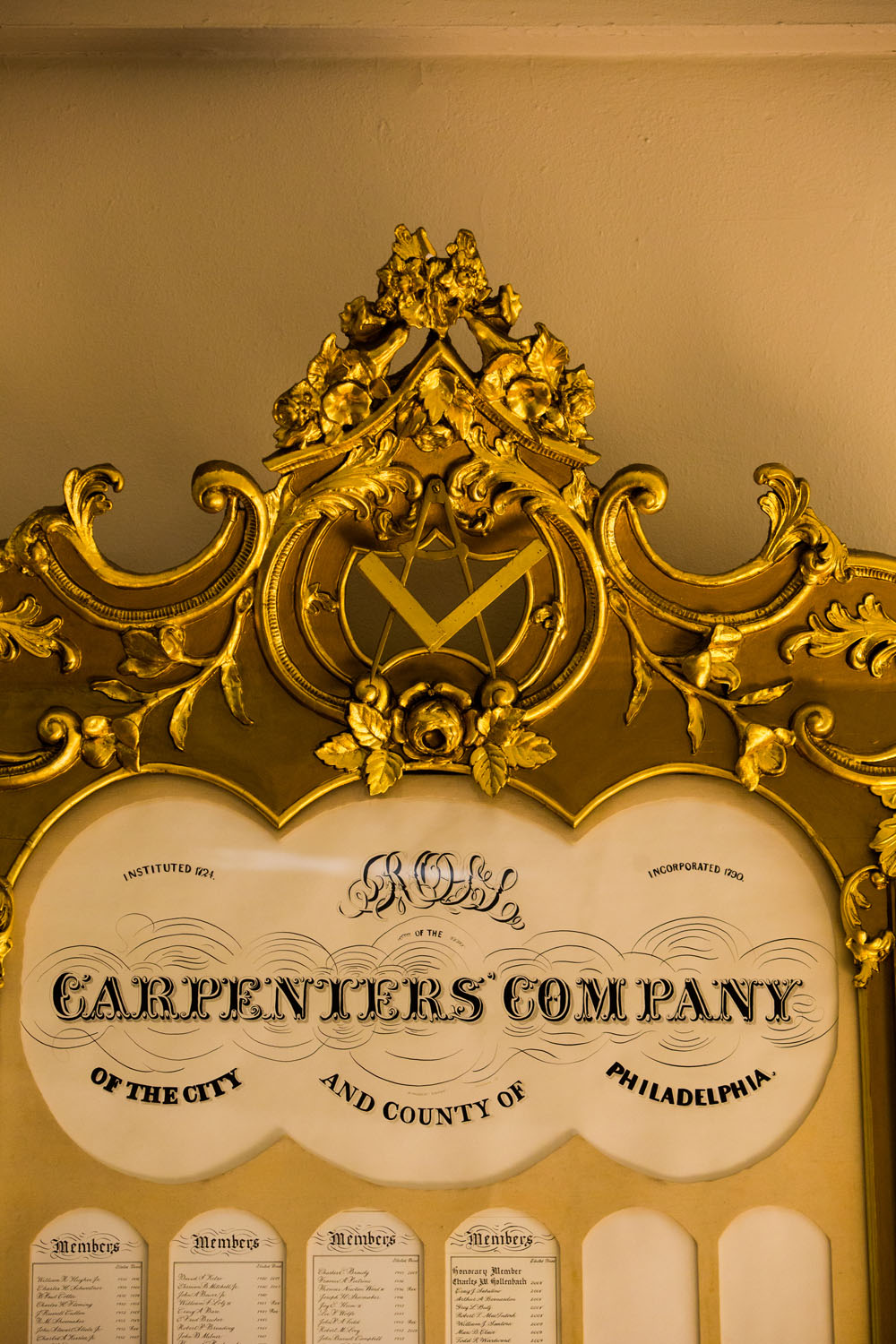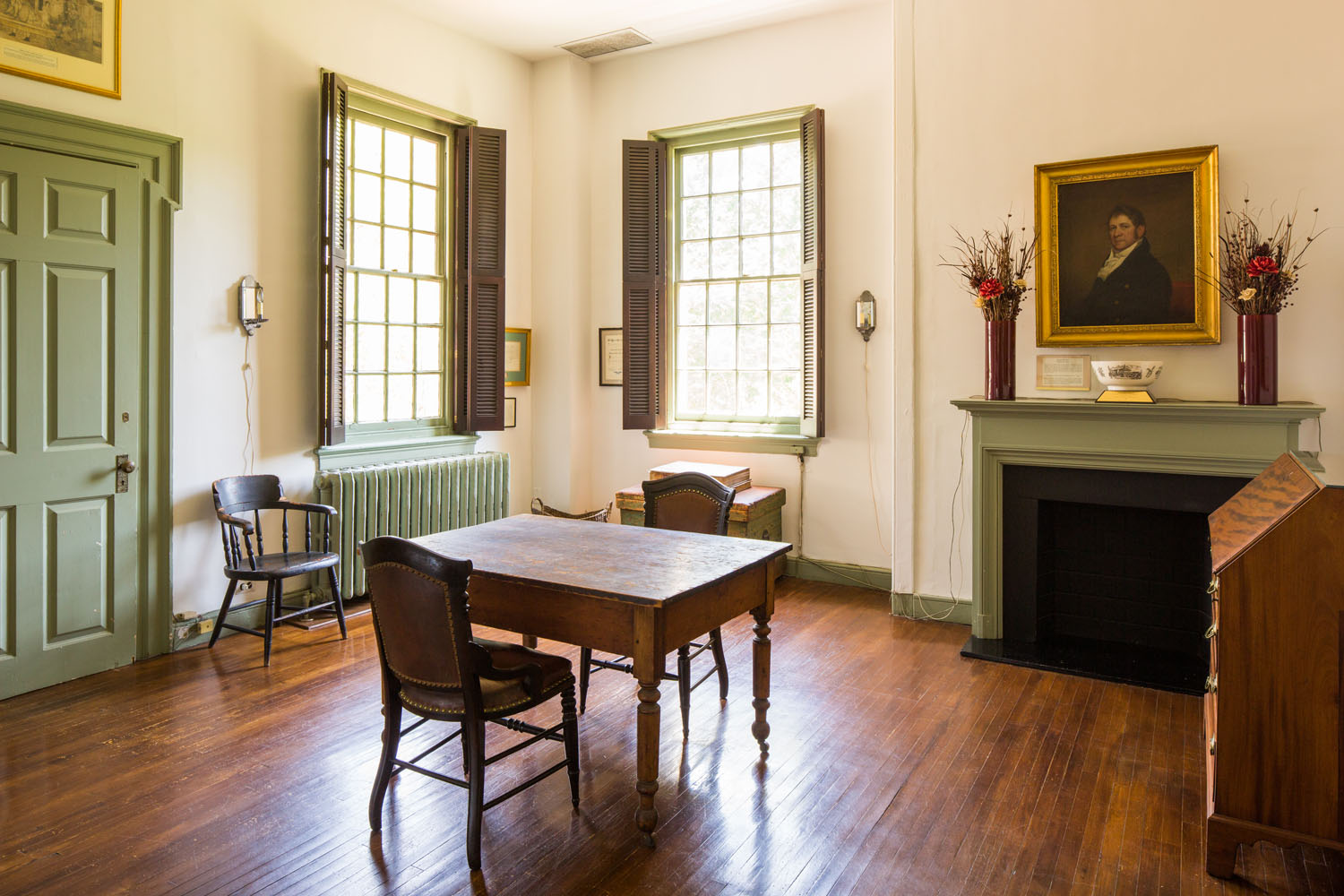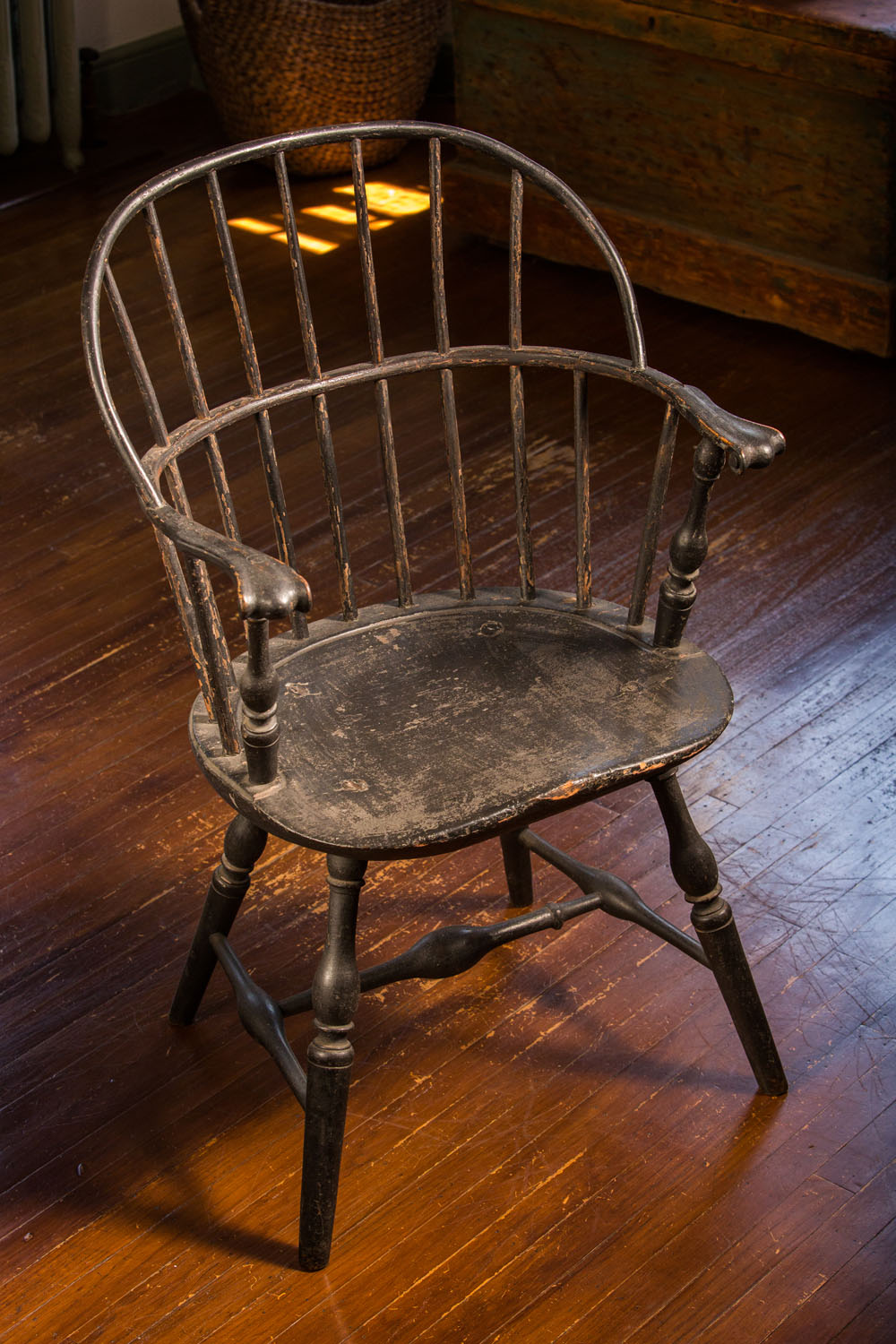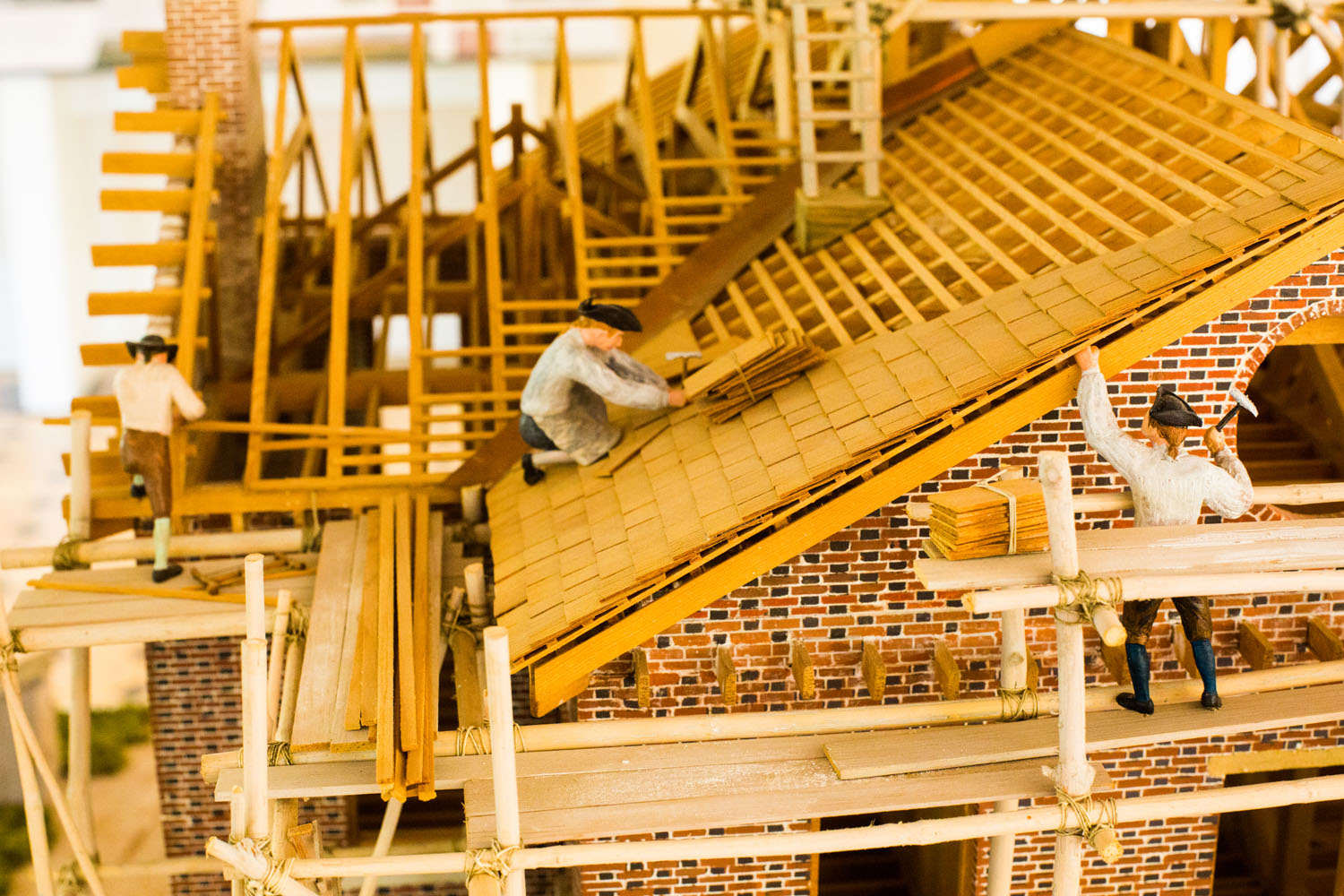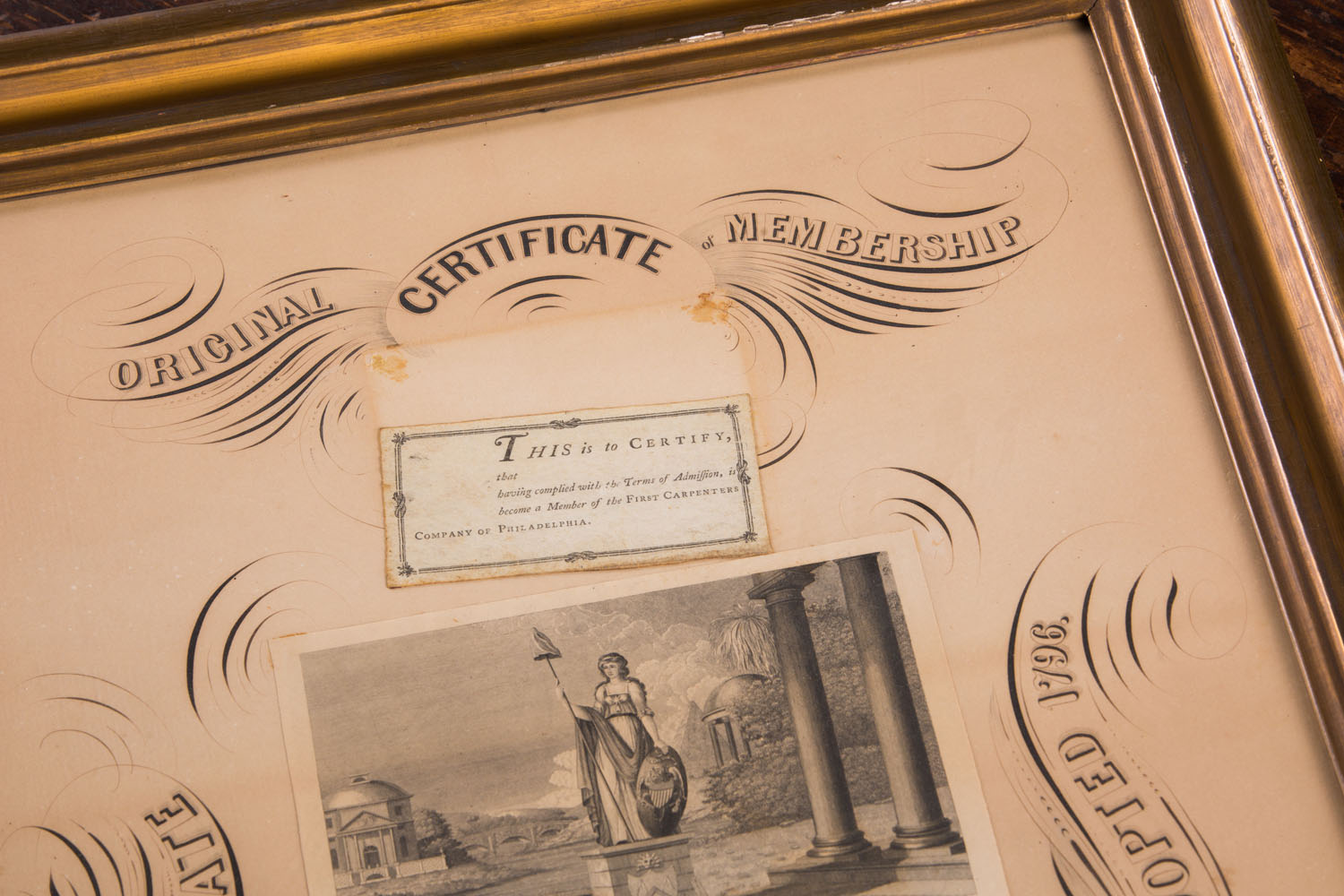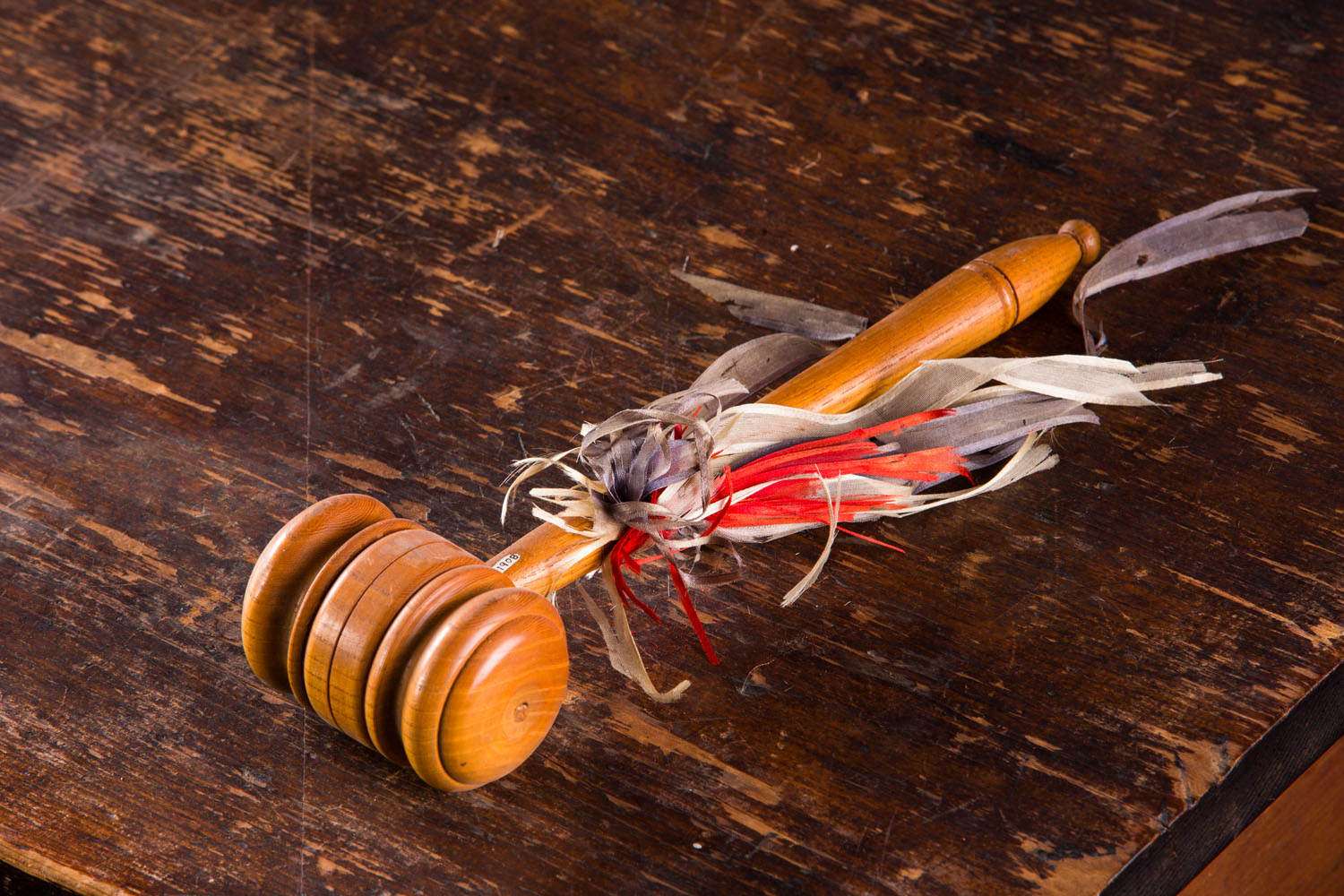The Company
Some 150 men and women, all of them prominent architects, building contractors or structural engineers, carry on the 300-year tradition of The Carpenters' Company of the City and County of Philadelphia — giving form to the future. From the 18th-century members who erected Independence Hall, Christ Church and Carpenters' Hall to the members of today, innovation in design and technical achievement have contributed to their pre-eminent reputation.
The Mission of The Carpenters' Company of the City and County of Philadelphia
To preserve and maintain historic Carpenters' Hall;
To interpret for the public the significant events that took place in or around the Hall and the history of building construction;
To preserve the history and traditions of the Company;
To provide a forum of professional association and fellowship for builders, architects, and engineers;
To provide encouragement, education, and support for men and women entering the construction industry;
To develop and maintain professional relations with other organizations who have similar interests;
To encourage support, research, and publication of history relating to the Company and its members and to the development of building construction and architecture.
900 Members... 300 Years
Just inside the entrance to the Hall and to the left are pictured most of the 900-plus members who for three centuries have shaped the structures of Philadelphia and its environs. Not shown are the illustrious early members who lived before the era of photography and could not afford portraits. Nevertheless they were giving form to Penn's "greene country towne" prior to the Company's founding in 1724. One of the earliest future members was James Portues, an apprentice carpenter who stepped ashore from the ship "Welcome" with William Penn in 1682. Later he erected the house (now the site of Welcome Park on Second St. just above Walnut) where Penn lived during part of his second visit.
In modern usage the name "Carpenters' Company" is misleading; members were neither carpenters as such nor were they a company. Certainly, they were skilled craftsmen who, for example, created much of the fine woodwork for the State House (Independence Hall) and — on short notice — built a highly imaginative parade float designed by artist Charles Willson Peale for the parade on July 4, 1788, celebrating the Constitution's ratification. But their unique talent lay in drawing plans for a building, hiring bricklayers, glaziers and carpenters, then supervising construction and engineering. They were truly "Master Builders" and referred to themselves as such.
Although they had officers, committees and rules for membership, the men used the term "company" in the old English sense of an association. Early members emigrated from England and were well acquainted with London's Worshipful Company of Carpenters, rooted in the medieval trade guild tradition.
Eighteenth-century Philadelphia benefited from a unique combination of Quaker fairness and geology. Many early members were Quakers who strongly believed a worker should be paid fairly for his labor but, equally important, should give good value. Their credo found expression in the Carpenters' Company Rule Book which used a form of "unit pricing" to set the cost of every stage in construction. Bricks were not imported, they were made in local brickyards. This city is not built on bedrock — as is New York — but on the outwash plain of the Appalachian mountains. Clay beds, the raw material of bricks, are just beneath the surface.
Innovation has been a Company hallmark from the eighteenth century to the twenty first.
Christ Church steeple, designed by Company member Robert Smith, was for decades the city's tallest landmark. Smith used ships' "knees" to brace the tower and employed shipwrights in 1754 to erect it.
In the 19th century, Company members specialized in home-building, reflecting the city's growth. Mansions along Broad Street for newly-minted industrialists and block upon block of row houses — all were in demand. One member (George Harmstad) in 1830 built for himself one of the area's first houses in the new Victorian style.
The 20th and 21st centuries also have witnessed innovations.
- the first Philadelphia skyscraper erected with an interior steel frame.
- the nation's first baseball stadium built with reinforced concrete.
- concrete delivered by the truck-load in "ready-mix" vehicles to form the city's first subway.
- designs for a new generation of high-speed transcontinental passenger trains.
- the country's greatest number of former office towers transformed by "adaptive re-use" as premier hotels and apartment houses.
- company involvement in the cities “greenest” buildings & sustainable building practices.
- construction of the tallest building in Pennsylvania, the Comcast Technology Center.
Wherever you travel in the region, Carpenters' Company members continue to shape the future.


